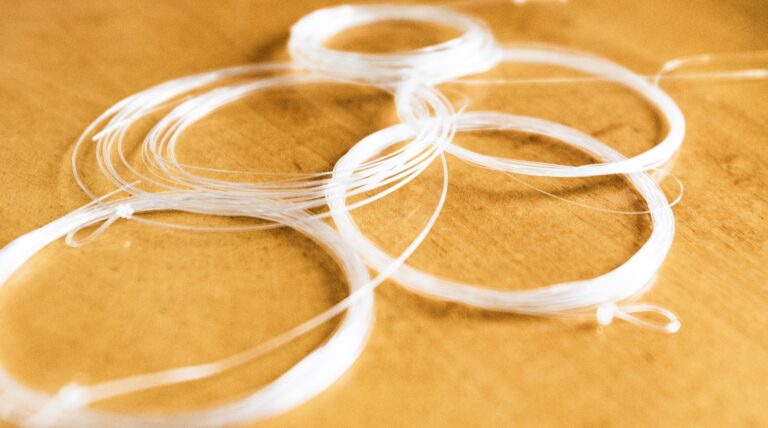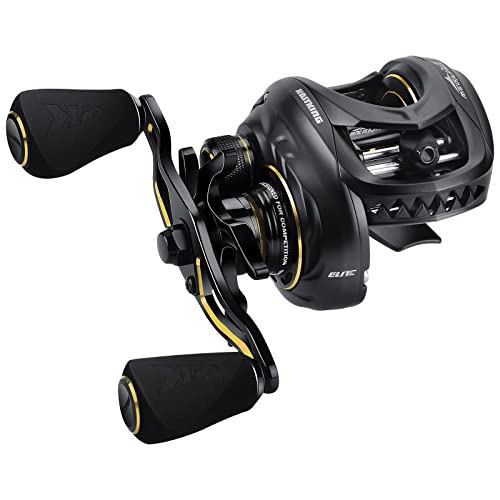Sight fishing is the act of locating and targeting fish visually in their natural habitat. By carefully observing the water surface and surroundings, anglers can identify and cast their bait or lure directly to the fish they want to catch.
This technique requires sharp eyesight, stealthy movements, and knowledge of the fish’s behavior. Sight fishing provides an exciting and challenging experience for fishermen as they must rely on their visual senses and angling skills to entice the fish to bite.
Whether fishing in clear waters or shallow flats, sight fishing allows anglers to specifically target their desired catch, increasing their chances of success.

Credit: issuu.com
The Definition Of Sight Fishing In Precision Angling
Understanding The Concept Of Sight Fishing
Sight fishing is a technique employed by precision anglers to specifically target fish they can see underwater. It involves visually spotting fish, usually in clear water conditions, and making accurate casts to entice them into biting. By observing the movements and behavior of the fish firsthand, anglers can adjust their strategies and presentations accordingly to increase their chances of success.
Key points:
- Sight fishing is a visually based angling technique where anglers locate fish underwater and make targeted casts to entice them.
- It is commonly used in clear water conditions where the fish can be seen with the naked eye or aided by polarized sunglasses.
- The technique requires keen observation skills and the ability to interpret fish behavior in order to make precise and effective presentations.
- Sight fishing typically involves techniques such as fly fishing, bait casting, or spinning, depending on the angler’s preference and the species being targeted.
The Importance Of Visual Observation In Angling
Visual observation plays a crucial role in angling success, especially when it comes to sight fishing. By relying on their eyes, anglers gain valuable insights into fish behavior, habitat preferences, and feeding patterns. This information allows them to make informed decisions and present their baits or lures in a manner that proves irresistible to the fish.
Key points:
- Visual observation enables anglers to understand fish behavior, including feeding patterns, spawning habits, and territorial tendencies.
- By observing the environment, anglers can identify underwater structures, such as weed beds or submerged rocks, that attract fish and help them strategize their approach.
- Understanding fish habitat preferences allows anglers to target specific areas and increase their chances of encountering the desired species.
- Visual cues, such as ripples on the water’s surface or tailing fish, can alert anglers to the presence of fish and guide their fishing strategy.
Sight fishing is not only a highly effective angling technique; it also adds an element of excitement and satisfaction to the fishing experience. Being able to witness the fish, study their behavior, and successfully fool them into biting brings a sense of accomplishment that is hard to beat.
So, when it comes to precision angling, sight fishing proves to be a valuable skill that can significantly enhance your chances of landing that prized catch. Remember, practice and patience are key to mastering this technique, and each sighting is an opportunity to fine-tune your approach and become a more skilled angler.
Techniques And Strategies For Successful Sight Fishing
Sight fishing is a thrilling technique used by anglers to target specific fish species by visually spotting them in the water. It requires not only a keen eye but also the right techniques and gear to increase the chances of success.
In this section, we will explore the essential techniques and strategies for a successful sight fishing experience.
Selecting The Right Location For Sight Fishing
To maximize your chances of spotting fish, it is crucial to choose the right location. Here are some key considerations:
- Look for clear and shallow waters: Clear waters provide better visibility, allowing you to spot fish more easily. Shallow areas near the shoreline are often prime spots for sight fishing.
- Search for underwater structures: Fish tend to congregate around underwater structures such as reefs, drop-offs, and submerged vegetation. These areas provide cover and food sources, making them ideal for sight fishing.
- Pay attention to tidal movements: Fish are more active during certain tidal phases. Research and understand how tides affect the fish behavior in your chosen location.
Choosing The Proper Gear For Sight Fishing
Having the right gear is crucial for successful sight fishing. Here are some gear essentials:
- Lightweight fishing rod and reel: Opt for a lightweight setup to ensure maximum sensitivity and control when casting and fighting fish.
- Fluorocarbon fishing line: Fluorocarbon is nearly invisible underwater, increasing your chances of fooling the fish. It also has a low stretch, enhancing sensitivity.
- Weedless hooks: To prevent snagging on vegetation, use weedless hooks which are designed to slide through weeds and grass without getting caught.
- Polarized sunglasses: Polarized sunglasses not only protect your eyes but also reduce glare from the water surface, allowing you to spot fish more easily.
Employing Stealth And Patience Techniques
Sight fishing requires you to be stealthy and patient to avoid spooking the fish. Here are some stealth and patience techniques:
- Move slowly and quietly to avoid vibrations that can scare fish.
- Cast your lure or bait accurately and gently, without causing a disturbance.
- Observe the fish’s behavior and adjust your tactics accordingly. Be patient and wait for the opportune moment to make your cast.
Using Polarized Sunglasses For Enhanced Sight Fishing Experience
Polarized sunglasses are a game-changer when it comes to sight fishing. Here are the benefits of using them:
- Reduce surface glare: Polarized lenses eliminate glare from the water surface, enabling you to see underwater structures, fish, and subtle movements more clearly.
- Enhance contrast and visibility: These sunglasses enhance color contrast, making it easier to spot fish camouflaged in their surroundings.
- Protect your eyes: Polarized sunglasses offer uv protection, shielding your eyes from harmful sun rays.
Now equipped with the essential techniques, strategies, and gear, you are well-prepared for a productive sight fishing adventure. Remember to select the right location, gear up properly, employ stealth and patience, and enhance your experience with polarized sunglasses. Happy sight fishing!
Benefits And Challenges Of Sight Fishing
Sight fishing is a technique that has gained popularity among anglers due to its precision and excitement. It involves observing and targeting fish directly in their natural habitat, relying on visual cues to make accurate casts. This method not only requires skill and patience but also offers several advantages for anglers looking to up their game.
However, sight fishing also presents its own set of challenges that anglers must overcome. In this section, we will explore the benefits and challenges of sight fishing and provide tips for maximizing success.
Advantages Of Sight Fishing In Precision Angling
Sight fishing offers numerous benefits for anglers who seek to enhance their fishing experience. Here are some key advantages:
- Enhanced accuracy: By visually locating fish, anglers can make precise casts and target specific individuals. This increases the chances of success and reduces the risk of wasting time and effort.
- Selective targeting: Sight fishing allows anglers to selectively target larger or trophy fish. By identifying individual fish, anglers can focus their efforts on the specimens that meet their criteria, resulting in a more rewarding fishing experience.
- Better catch rate: The ability to see fish in their natural habitat gives anglers an advantage in terms of catching fish. With a better understanding of the fish’s behavior, anglers can choose the right bait, lure, or technique to entice the fish to bite.
- Thrilling experience: Sight fishing provides an exhilarating experience as anglers get to witness the entire process unfold, from spotting the fish to executing the perfect cast. It adds an element of excitement and anticipation that enhances the overall enjoyment of the fishing trip.
Overcoming Challenges In Sight Fishing
While sight fishing offers many advantages, it also comes with its own set of challenges. Here are some common hurdles that anglers face:
- Weather conditions: Sunlight, wind, and water clarity can greatly impact sight fishing opportunities. Cloudy days, strong winds, or murky water can make it difficult to spot fish, making it essential for anglers to monitor weather conditions and adapt accordingly.
- Fish spooking: The close proximity of anglers to the fish in sight fishing can sometimes startle or scare them away. Anglers must approach stealthily and make accurate casts without alerting the fish, requiring a delicate balance of skill and finesse.
- Limited visibility: The visibility of fish may be limited due to various factors such as vegetation, depth, or water conditions. Anglers must learn to adapt to these limitations and rely on their experience and intuition to locate fish in challenging environments.
Tips For Maximizing Success In Sight Fishing
To make the most of your sight fishing endeavors, consider the following tips:
- Polarized sunglasses: Investing in a good pair of polarized sunglasses can greatly enhance your visibility underwater, helping you spot fish more easily and accurately.
- Stealth and patience: Approach your fishing spot quietly and avoid unnecessary movements that may disturb the fish. Patience is key in sight fishing, as it may take some time for fish to get comfortable and resume their normal behavior.
- Practice casting accuracy: Sight fishing puts a premium on accurate casting. Take the time to practice your casting techniques, ensuring that you can make precise casts to your target consistently.
- Observe fish behavior: Pay attention to the behavior and movements of the fish you are targeting. Understanding their patterns and feeding habits can significantly increase your chances of success.
- Adapt to conditions: Be prepared to adapt your approach based on changing weather conditions, visibility, or fish behavior. Flexibility is crucial in sight fishing.
By leveraging the advantages of sight fishing, overcoming its challenges, and implementing effective strategies, you can elevate your angling skills and enjoy an unforgettable fishing experience. So get out there, keep your eyes peeled, and get ready for the thrill of sight fishing!
Conclusion
Sight fishing is a thrilling angling technique that requires patience, skill, and a keen eye. By using visual cues to locate fish, anglers can immerse themselves in the natural environment and experience a more intimate connection with the water. Whether standing in a shallow river or peering over the side of a boat, sight fishing allows anglers to truly appreciate the beauty and complexity of the underwater world.
This technique offers numerous benefits, including the ability to target specific species or sizes of fish, increasing the chances of a successful catch. It also requires anglers to be more observant, learning to recognize subtle movements, shadows, or disturbances in the water that indicate the presence of fish.
This heightened level of awareness can enhance an angler’s overall fishing skills and deepen their understanding of fish behavior. Sight fishing is not without its challenges, as it requires optimal conditions and a strategy tailored to the specific body of water and fish species.
However, the rewards are well worth the effort. It provides a unique and exciting angling experience that connects anglers with nature in a profound way. So, next time you head out on your fishing adventure, consider trying sight fishing for a truly unforgettable fishing experience.



